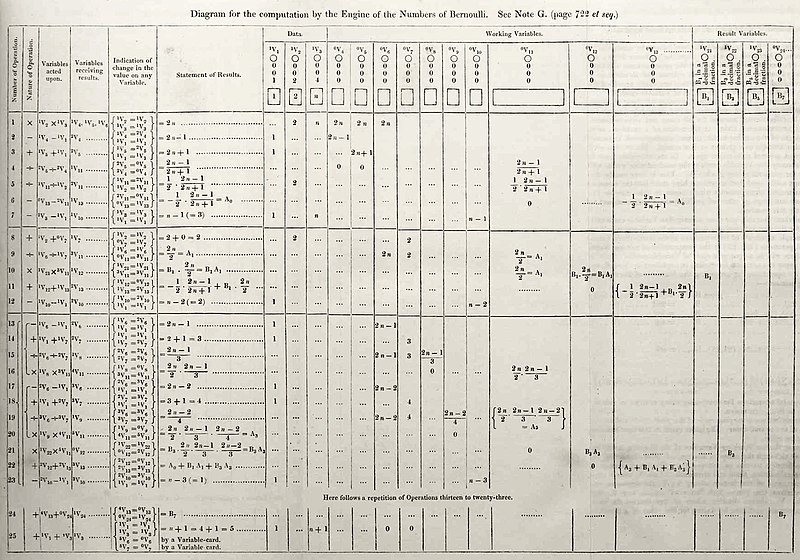Augusta Ada King-Noel, Countess of Lovelace (10 December 1815 – 27 November 1852) was an English mathematician and writer, chiefly known for her work on Charles Babbage’s proposed mechanical general-purpose computer, the Analytical Engine. [1].
She is widely regarded as the first computer programmer. She wrote an algorithm to calculate the Bernoulli numbers, for more please visit the previous blog here.
So, I thought to study and analyze Bernoulli numbers.
Let us begin,
Definition: The Bernoulli numbers are defined as the co-efficients of the power series of the expansion of . For , we define so that,
Let us apply some mathematical rigor into it and see what happens.
We have,
Now, we know the McLaurin Series is,
Let, , to find its McLaurin coefficients we must evaluate for all =
By substitution, the McLaurin Series expansion of is,
Using in , we get,
Let’s see which coefficient has the in the expanded right-hand part of this equation for some (we expect this coefficient to be a zero). may appear if from the first sum multiplies the from the second one for some . Thus,
for any . Thus
Now for we have from
and thus
We know,
and so on…
Then, how about,
Mathematicians have always been fascinated with such classic general formulae. So was JohannFaulhaber.
Let,
Define the following exponential generating function with (initially) indeterminate
We find
This is an entire function in so that can be taken to be any complex number.
We next recall the exponential generating function for the Bernoulli polynomials
where denotes the Bernoulli number (with the convention ). We obtain the Faulhaber formula by expanding the generating function as follows:
Solving it is again very complex, so, finally we get,
Note that, , odd ; that is why Faulhaber defines .
We put, , and and see that = .
Hence, Proved.
She is widely regarded as the first computer programmer. She wrote an algorithm to calculate the Bernoulli numbers, for more please visit the previous blog here.
So, I thought to study and analyze Bernoulli numbers.
Approach 1 :
Let us begin,
Definition: The Bernoulli numbers are defined as the co-efficients of the power series of the expansion of . For , we define so that,
Let us apply some mathematical rigor into it and see what happens.
We have,
Now, we know the McLaurin Series is,
Let, , to find its McLaurin coefficients we must evaluate for all =
By substitution, the McLaurin Series expansion of is,
Using in , we get,
Let’s see which coefficient has the in the expanded right-hand part of this equation for some (we expect this coefficient to be a zero). may appear if from the first sum multiplies the from the second one for some . Thus,
for any . Thus
Now for we have from
and thus
Approach 2 :
We know,
and so on…
Then, how about,
Mathematicians have always been fascinated with such classic general formulae. So was JohannFaulhaber.
Let,
Define the following exponential generating function with (initially) indeterminate
We find
This is an entire function in so that can be taken to be any complex number.
We next recall the exponential generating function for the Bernoulli polynomials
where denotes the Bernoulli number (with the convention ). We obtain the Faulhaber formula by expanding the generating function as follows:
Solving it is again very complex, so, finally we get,
Note that, , odd ; that is why Faulhaber defines .
Verification:
Let us consider the following values,We put, , and and see that = .
Hence, Proved.

